| |
National Brewery Centre lives
by Willard Clarke , 04/2010
Burton has got its museum back. The small Midlands borough renowned throughout the world as the home of pale ale brewing has a modern visitor centre dedicated to "Beer Town".
| Forget the word museum and thoughts of cobwebs and dust. It's now the National Brewery Centre and its owner, Planning Solutions, will use its expertise to bring to Burton-on-Trent
thousands of people who can actively participate rather than passively watch static models.
They will find not only interactive displays but also live actors portraying such figures from the past as members of the mighty Bass family down to humble coopers and joiners who
built oak casks in the 19th century. The Bass dray horses, put out to pasture two years ago, are back in their stables for the delight of younger visitors.
|
|
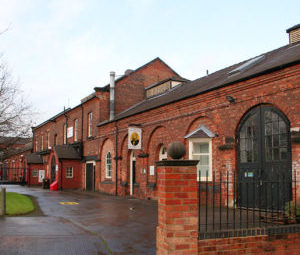 |
It seemed the entire enterprise would be put out to pasture along with the horses when Coors Brewers announced the closure of the Burton museum in 2008. Originally called the
Bass Museum, ownership passed to Coors in 2001 when it took over the Burton brewery. At its peak, the museum attracted 120,000 visitors a year. But, under-promoted, the crowds
dwindled and Coors said it could no longer sustain losses of around £1m annually.
Coors - now Molson Coors - was stunned by the reaction to the closure. The local MP, Janet Dean, called a meeting in Burton attended by the local Civic Society and Chamber of Commerce,
the borough and county councils, Staffordshire Arts and Museums, the Campaign for Real Ale and the British Guild of Beer Writers.
There was a united determination to save the museum and maintain it as a focal point in the Midlands, with its rich brewing traditions. A task group was set up that looked into
several options for the centre, including turning it into a trust that might gain National Heritage Lottery Funding.
Feelings were running high in Burton and neighbouring Derby. The Burton Mail highlighted the campaign to save the museum while a 400-strong demonstration through the town won
considerable media coverage.
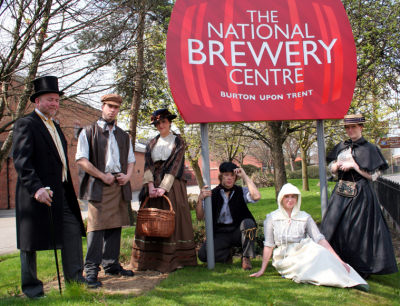 |
|
In far away Boulder, Colorado, Coors was horrified by the bad publicity. Executives flew to Britain and the local management was told in no uncertain terms to sort out the
problem. At a meeting of the museum task group last November, the members were startled to learn from Molson Coors that it had reached an agreement with Planning Solutions for
the company to take over the site.
Right: some of the museum's 'living exhibits' |
Molson Coors made an initial £200,000 donation to the new centre and will add an annual contribution of £100,000. The task group has not disbanded and will keep a keen eye on developments. But it was not displeased by the outcome as the members knew it could take several years to get a decision on Lottery funding, with no guarantee of success.
Planning Solutions presses all the right buttons where visitor attractions are concerned. It owns Conkers, a highly successful family venue in the National Forest, has an interest in Vinopolis, the wine centre in London, and also runs several Harry Ramsden fish restaurant franchises.
The company was founded by Mike Stickland, who had worked for Rank, while his chief executive John Lowther came from Granada. Lowther, working in a temporary office in the grounds at Molson Coors, said Planning Solutions had decided to take on the museum as it was company policy to "go for growth".
As a result of the recession, Lowther and Stickland know a growing number of people are taking holidays in Britain, with the result that visitor attractions are drawing greater numbers.
"Coors was anxious to get rid of the museum," Lowther says. "We had a good walk round. It was old-fashioned and boring but we did a feasibility study and found huge warmth for the museum in the area. We also had the bonus of support from CAMRA and its 112,000 members.
"It will be food and drink, functions and events that will make the real money. We hope the visitor centre will make a small profit. A small profit keeps us happy but it wasn't enough to satisfy Coors."
| The National Brewery Centre will open on 1 May and, says John Lowther, will be family-attractive with audio displays, not artefacts in dusty rooms. The main centre will be based in the three-storey, Grade II-listed Joiners' Shop, the centre of the old museum. There will also be restaurants and bars while the Worthington Suite can be hired for functions. Food will include dishes matched with beer and there will be beer snacks: Lowther is keen that people in Burton will drop in on a regular basis and use the centre as their local.
His commitment to the museum is based on hard research, not wishful thinking. "There's a tremendous resurgence of interest in history and culture as well as a revival of cask ale in Britain," he says. "The centre will have an important educational side, too, with research facilities for students. We will get old documents and artefacts out of storage for people to see."
|
|
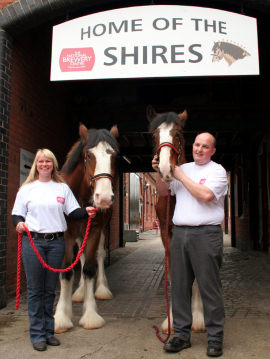 |
And beer will be the heart beat of the centre. Bass master brewer Steve Wellington, who has run the White Shield micro-plant on site for several years, will move into the visitor centre with new kit that will enable him to produce 100 barrels a week of cask beer. The brewery will be open to view and its beers will include the new premium Red Shield (4.2%), a typical Burton pale ale that will help enforce Beer Town's glorious past and future.
National Brewery Centre
Burton-on-Trent
Phone: 01283 532880
£8.95 adults (family tickets; off-peak rates; 20% discount for CAMRA members)
Why Burton?
The answer lies in the soil...and the water. The wells and springs that bubble up in the Trent Valley are rich in natural sulphates, gypsum and magnesium in particular. Sulphates or salts are flavour enhancers and it's the salts that bring out the finest flavours from the malts and hops used in Burton beers.
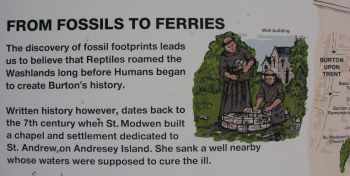 |
|
As early as the 7th century, the almost miraculous quality of the local water came to light when an Irish nun called Modwena paused at the River Trent while en route to Rome.
She crossed to an island that she named Andressey (St Andrew's Isle), where she built a chapel and used the local water to cure people of skin and eye diseases. |
One young man she nursed back to health went on to become King Alfred the Great.
Modwena did eventually get to Rome but she returned to Andressy on a number of occasions, built more churches, drank the water, lived reputably to 130 years of age and became St Modwen following her death. The White Shield Brewery at Molson Coors brews a St Modwen Ale in her memory.
In 1004 AD, Wulfric Spot, the Earl of Mercia, paid tribute to Modwen by founding a Benedictine abbey at "Byrtune" across the river from Andressy. The monks settled to their devotions and brewed ale for their own requirements as well as for travellers and pilgrims.
Burton remained a tiny settlement until the 17th century, when commercial brewing started to develop. "Common" brewers - as opposed to monastic brewers - owed their existence to Henry VIII, who had dissolved the monasteries and their breweries a century earlier.
Burton today is famous as the home of pale ale but long before that style developed the town became well known for an earlier type of beer known simply as Burton Ale. Burton, brown, sweet but well hopped, became a cult drink in London. By the early 18th century there were references in London journals to "Hull ale" but this was almost certainly beer from Burton that reached the east coast port by way of the Trent and was then taken on to the capital by boat.
Hull also gave the Burton brewers a passage to the east. They began to export substantial quantities of Burton Ale to Russia and the Baltic States. At one stage, the Baltic trade accounted for 70% of their annual production. But tariffs on English exports imposed by the Russians, followed by Napoleon's blockade of the Baltic ports during his wars with England, destroyed Burton's export trade.
| Desperate for new markets, the Burton brewers, led by Allsopp and Bass, were encouraged by the East India Company to follow in the steps of a London brewer named Hodgson who had found success with an "India Ale", pale and well hopped: the hops kept the beer in good condition on the long sea journey to Bombay and Calcutta.
The Burton brewers found the local water was ideally suited to making pale ale. Allsopp and Bass, along with Thomas Salt and William Worthington, switched production from sweet
brown beer to highly hopped pale ale. Within 10 years, Allsopp and Bass accounted for half the beer shipped to India.
|
|
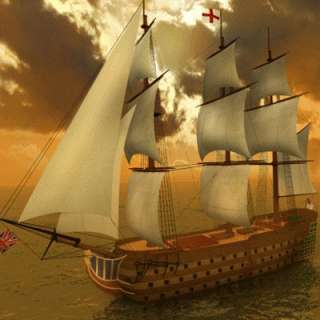 |
Throughout the 1830s, the two leading Burton brewers sent some 6,000 barrels a year to India and eventually eclipsed Hodgson in London.
The total output of the Burton brewers more than quadrupled in the 1840s and then tripled a decade later. By 1888, 31 breweries in the town produced more than one million barrels a year. Bass had three breweries in the town and had become the biggest brewer in the world.
The Burton brewers did not neglect the home market. Using the new train system, they sent lower strength versions of IPA, called simply Pale Ale, to all parts of Britain. When St Pancras Station was built in London, its cellars were designed to house giant hogsheads of Bass beer from Burton.
In the 20th century, as brewers throughout Britain learned to "Burtonise" their brewing water, Burton went into decline. Salt's brewery closed and Bass and Worthington merged in the 1920s. Ind Coope joined forces with Allsopps and eventually became part of Allied Breweries.
With the collapse of Allied Breweries, the Ind Coope and Allsopp legacy has disappeared while the former Bass breweries are now owned by Molson Coors. But Marston's remains a potent presence in the town and a number of smaller craft brewers, led by Burton Bridge, are helping to restore Burton's role as a major brewing centre.
|
|
|





